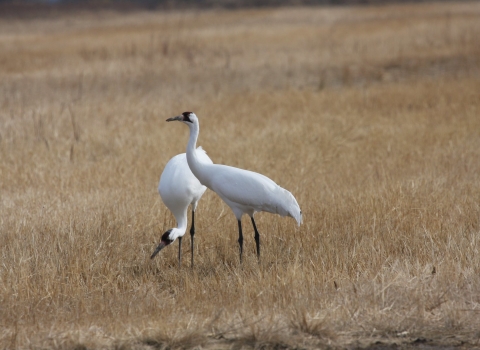Following another depredation incident on private land in the East Fork of the Salmon River near Clayton, Idaho, the U.S. Fish and Wildlife Service lethally controlled three members of the Whitehawk Pack. The wolves, B120f, B122f and B124m, were killed after depredating on a domestic calf on April 3. Two other Whitehawk Pack members, B125m and an uncollared male gray wolf, were lethally controlled on April 1 after depredating on a domestic sheep in the same area. Five pack members, three yearlings and an adult pair, remain in the East Fork area.
Radio-activated guard units ("RAG boxes") and monitors have been deployed on several East Fork ranches for the past two months. Most of the Whitehawk Pack members are collared, and recent records indicate that several of the animals have triggered the devices frequently. The three collared wolves were lethally controlled after being identified by the monitors in the calving pastures before and after the calf depredation. One rancher observed the wolves in the calving area shortly following the calf kill. USDA Wildlife Services confirmed the calf had been killed by wolves.
The Service is hopeful that a combination of various measures, including private landowner lethal take permits, will be successful in preventing future depredations. Idaho Wolf Recovery Coordinator Carter Niemeyer noted, "In this situation, the Service, Wildlife Services, and the Nez Perce Tribe believe that all reasonable efforts to use non-lethal means to discourage depredations were exhausted." Chronic depredation incidents will result in further lethal control.
-FWS-
The U.S. Fish and Wildlife Service is the principal Federal agency responsible for conserving, protecting and enhancing fish, wildlife and plants nd their habitats for the continuing benefit of the American people. The Service manages the 95-million-acre National Wildlife Refuge System which encompasses more than 535 national wildlife refuges, thousands of small wetlands and other special management areas. It also operates 70 national fish hatcheries, 64 fishery resource offices and 78 ecological services field stations. The agency enforces Federal wildlife laws, administers the Endangered Species Act, manages migratory bird populations, restores nationally significant fisheries, conserves and restores wildlife habitat such as wetlands, and helps foreign governments with their conservation efforts. It also oversees the Federal Aid program that distributes hundreds of millions of dollars in excise taxes on fishing and hunting equipment to state fish and wildlife agencies.


